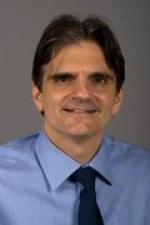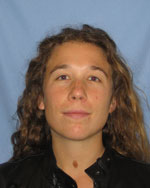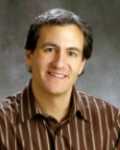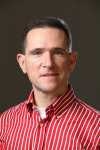 MedicalResearch.com Interview with:
Interview of Candice Contet, Ph.D.
MedicalResearch.com Interview with:
Interview of Candice Contet, Ph.D.
Assistant Professor
The Scripps Research Institute, La Jolla, CA
MedicalResearch: What is the background for this study?
Dr. Contet: Alcohol changes the activity of numerous proteins in the brain. One of them is an ion channel found in neurons, the G-protein activated inwardly rectifying potassium (GIRK) channel. It is however unknown whether the ability of alcohol to open GIRK channels matters for its effects
in vivo, i.e. how tipsy we feel or how motivated we are to drink alcohol. To address this question, we studied mice that are lacking one of the components of GIRK channels, the GIRK3 subunit. These mice behave normally in the absence of alcohol, and we sought to determine whether they respond differently to alcohol.
MedicalResearch: What are the main findings?
Dr. Contet: We found that the absence of GIRK3 did not impact how fast the mice clear alcohol from their body nor how sensitive they are to alcohol intoxication. Alcohol reduced their motor coordination, made them sleepy and lowered their body temperature to the same extent as in normal mice. GIRK3-deficient mice also drank as much alcohol as normal mice when they were given continuous access to alcohol, a situation in which mice sporadically drink throughout the day but rarely get intoxicated. By contrast, when mice are given access to alcohol only for a couple hours per day at a specific time of the day, they drink to the point of intoxication. Under these conditions, which emulate “
binge drinking”, the GIRK3-deficient mice drank more than normal mice.
The next step was to locate the region of the brain responsible for the effect of GIRK3 on binge drinking. We turned our attention to the mesocorticolimbic dopaminergic pathway, a neural circuit that facilitates reward seeking. This pathway originates in an area of the midbrain called the ventral tegmental area (VTA) and releases the neurotransmitter dopamine in two forebrain areas: the ventral striatum and the prefrontal cortex. Alcohol, like other drugs of abuse, activates this pathway. When we reintroduced GIRK3 in the VTA of GIRK3-deficient mice, their alcohol intake dropped down to normal levels. Increasing the levels of GIRK3 in the VTA of normal mice reduced their alcohol consumption even further. We concluded that GIRK3 in the VTA keeps binge drinking in check: the more GIRK3, the less binge drinking.
We then wanted to understand how GIRK3 controls binge drinking: do the GIRK3-deficient mice drink more because alcohol is more rewarding to them, or because more alcohol is needed for them to experience the same level of reward? To answer this question, we measured the activity of VTA neurons in brain slices. Alcohol usually make VTA neurons fire more – but in the absence of GIRK3, these neurons were completely insensitive to alcohol, even at a very high concentration. We also measured the levels of dopamine in the ventral striatum. Injecting mice with a moderate dose of alcohol usually causes a rise in dopamine levels – but again, GIRK3-deficient mice were completely unresponsive.
These results may seem paradoxical. If the canonical “reward pathway” of the brain cannot be activated by alcohol, these mice should not have any motivation to drink alcohol. But the mesocorticolimbic dopaminergic pathway is not the only brain circuit responsible for the rewarding properties of alcohol, and we think that GIRK3-deficient mice end up drinking more alcohol to activate alternative circuits more strongly than normal mice would.
(more…)
 MedicalResearch.com Interview with:
Robert Wong, M.D., M.S.
Attending Physician, Gastroenterology & Hepatology
Director, GI Research
Highland Hospital I A member of Alameda Health System
Oakland, CA 94602
Medical Research: What is the background for this study? What are the main findings?
Dr. Wong: The main findings are that despite the stabilizing prevalence of metabolic syndrome, a large proportion of U.S. adults affected with metabolic still raises concern, especially given the significant health consequences associated with this syndrome. In additional to cardiovascular disease, metabolic syndrome also increases the risk of concurrent nonalcoholic fatty liver disease, often considered the hepatic manifestation of metabolic syndrome. Many studies, including work that our group has completed suggests that nonalcoholic fatty liver disease will soon become the leading etiology of chronic liver disease in the U.S. Furthermore, our finding that metabolic syndrome increases with increasing age, reflects the increased risk for metabolic syndrome associated diseases such as hypertension, diabetes, and dyslipidemia with older age. This is important to recognize given the aging population of the U.S.
(more…)
MedicalResearch.com Interview with:
Robert Wong, M.D., M.S.
Attending Physician, Gastroenterology & Hepatology
Director, GI Research
Highland Hospital I A member of Alameda Health System
Oakland, CA 94602
Medical Research: What is the background for this study? What are the main findings?
Dr. Wong: The main findings are that despite the stabilizing prevalence of metabolic syndrome, a large proportion of U.S. adults affected with metabolic still raises concern, especially given the significant health consequences associated with this syndrome. In additional to cardiovascular disease, metabolic syndrome also increases the risk of concurrent nonalcoholic fatty liver disease, often considered the hepatic manifestation of metabolic syndrome. Many studies, including work that our group has completed suggests that nonalcoholic fatty liver disease will soon become the leading etiology of chronic liver disease in the U.S. Furthermore, our finding that metabolic syndrome increases with increasing age, reflects the increased risk for metabolic syndrome associated diseases such as hypertension, diabetes, and dyslipidemia with older age. This is important to recognize given the aging population of the U.S.
(more…)






















